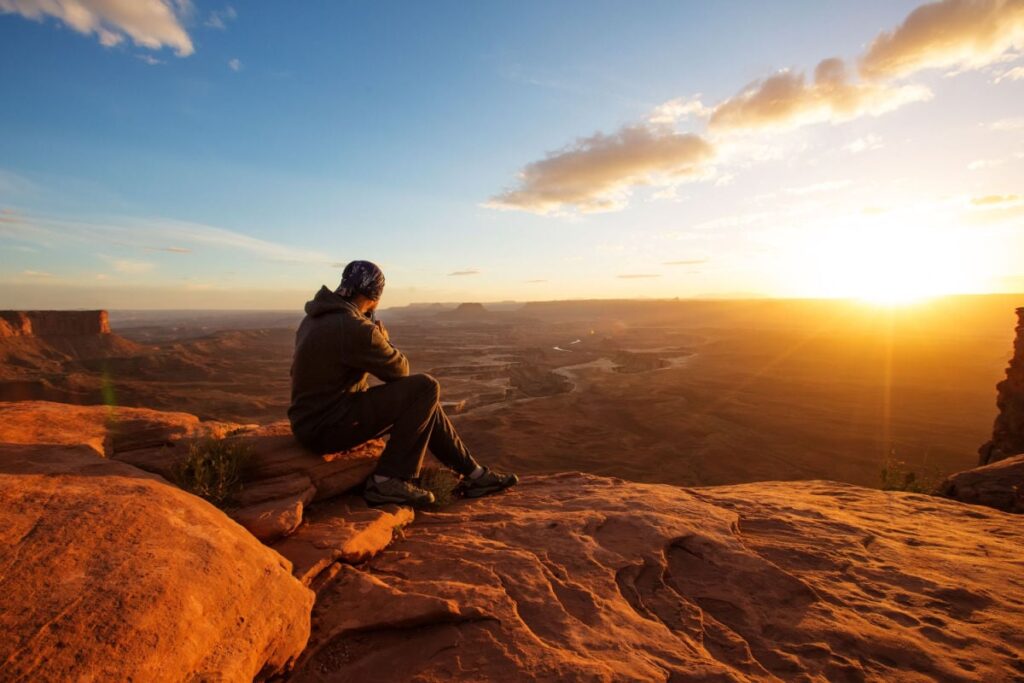No products in the cart.
Travel Guide
10 Stunning UNESCO World Heritage Sites You Can Visit Without Leaving The U.S.
Last Updated
Tourists seek out UNESCO World Heritage sites when they are traveling on vacation.
From the Taj Mahal to Stonehenge, these incredible attractions have been deemed influential and significant on a global scale.

But that doesn’t mean you have to travel the globe to find them. There are a whole host of stunning attractions you can visit right here in your own backyard. And you won’t even need a passport!
As of January 2023, there are 1,157 UNESCO World Heritage sites spread across the globe. And 24 of these sites are in the United States, with another 17 American sites currently under consideration for UNESCO status.
Here are ten of the most stunning UNESCO World Heritage site you can visit without leaving the U.S:
1. Yellowstone National Park
Yellowstone national park was granted UNESCO status in 1978: The first of two locations in the country to be given the honor.
The huge park covers an area of nearly 3,500 square miles and spans across three states. Wyoming, Montana, and Idaho.
The most famous attraction in Yellowstone is Old Faithful: a cone geyser with an eruption height of between 106 and 185 ft. The geyser erupts between every 44 minutes and two hours, meaning that you’re sure to see this natural phenomenon on your visit.

2. Grand Canyon National Park
Arizona’s Grand Canyon national park is the most visited national park in the United States and was granted UNESCO status in 1979.
The main attraction of this site speaks for itself: the Grand Canyon is 277 miles long, 18 miles wide, and over a mile deep in parts. Visitors to the national park can also enjoy beautiful hiking trails and incredible views from every angle.
Top 5 Travel Insurance Plans For 2023 Starting At $10 Per Week

3. Independence Hall
Located in the heart of Philadelphia, Independence Hall is considered the birthplace of America and was granted UNESCO status in 1979.
The building is the centerpiece of the Independence National Historical Park and is best known for being the site where both the Declaration of Independence and the United States Constitution were signed.
Visitors can take daily guided tours of Independence Hall. As a bonus, Philadelphia is home to a host of other key historical attractions.

4. Cahokia Mounds State Historic Site
To the untrained eye, Cahokia may look like an array of scattered hills, but this is actually the site of a pre-Columbian Native American city. The largest north of Mexico.
The site occupies approximately 5 square miles and was granted UNESCO status in 1982. When you visit Cahokia Mounds, you can learn more about the religion, culture and trade of the ancient civilization. The location is also popular with hikers.

5. Carlsbad Caverns National Park
The Carlsbad Caverns National Park in New Mexico features more than 100 caves. Three of these caves are open to the public. It is considered the most unique national park in the United States and joined the list of UNESCO sites in 1995.
Rare geological formations mean that huge stalactites cling to the roofs of many of the caves, lending them a beautiful, other-worldly feel.
Carlsbad Caverns is one of the most accessible and well-preserved of the world’s cave complexes. Tourists can walk, crawl or climb through the caves here.

6. Chaco Culture National Historical Park
The Chaco Culture National Historical Park is home to a series of culturally significant sites and was granted UNESCO status in 1987.
This heritage site was once home to the Ancestral Puebloans. Within the national park tourists can visit the Aztec Ruins National Moment and several smaller Chaco sites too.
The whole area is rich in heritage. Visitors can explore distinctive architectural remains, as well as the sacred Chaco Canyon.

7. The Statue of Liberty
Considered a symbol of American freedom, the Statue of Liberty is an icon of New York City.
It was granted UNESCO status in 1984 but has sat in New York Harbor for almost 100 years longer than that, having been gifted to the people of America by France in 1886.
The significance of the Statue of Liberty needs very little explanation, but a visit to see it in person is something every American should do at least once in their lifetime.

8. Everglades National Park
Many people head to Florida for the beaches or the theme parks, but if you’re spending your vacation in the State then you should carve out time to visit the Everglades.
Granted UNESCO status in 1979, the Everglades National Park is an endangered ecosystem. Covering an incredible 1.5 million acres, it boasts the largest mangrove ecosystem in the western hemisphere.
The Everglades are also a popular location for alligator spotting and is home to thirteen endangered and ten threatened species.

9. Taos Pueblo
Located in the heart of New Mexico, Taos Pueblo was granted UNESCO status in 1992. Visiting this site feels like stepping back in time.
First constructed during the 13th and 14th centuries, Taos Pueblo is considered one of the oldest continuously inhabited communities across the United States.
The site exposes visitors to over 1,000 years of Native American tradition. As well as exploring the community, tourists can also purchase art and crafts created by the residents.

10. Glacier National Park
Glacier National Park is a scenic heritage site that forms part of a wider group of four national parks, which were each granted Heritage status at different points.
Glacier Bay was listed in 1979, then Kluane and Wrangell–St. Elias were added in 1992 and Tatshenshini-Alsek in 1994. Only Glacier Bay and Wrangell–St. Elias are located in the United States. Both sites are in Alaska, whilst the other national parks are in Canada.
Glacier Bay is a site of outstanding natural beauty year-round. It covers 3.3 million acres, and tourists can explore mountains, glaciers, and even rainforests here.

Traveler Alert: Don’t Forget Travel Insurance For Your Next Trip!
↓ Join Our Community ↓
The Travel Off Path Community FB group has all the latest reopening news, conversations, and Q&A’s happening daily!

SUBSCRIBE TO OUR LATEST POSTS
Enter your email address to subscribe to Travel Off Path’s latest breaking travel news, straight to your inbox.
This article originally appeared on TravelOffPath.com
Source link

